If you’ve ever watched a sloth move, you might wonder if it’s spent its morning munching on something a little too “herbal.” Their movements are so slow, their eyes so dreamy, and their expressions so spaced-out, it’s no surprise that people joke about sloths being the animal kingdom’s resident stoners. But here’s the twist: sloths aren’t high at all. In fact, their otherworldly chill is the result of complex biology, evolutionary genius, and a lifestyle so unique it almost defies belief. So why do they seem like they’re floating through life in a blissed-out haze? Let’s unravel the science (and the myth) behind the sloth’s famously “stoned” vibe.
The First Impression: Why Do Sloths Look So Spaced Out?
Sloths have a reputation for appearing completely zoned out, almost as if they’re moving in slow motion through a dream. Their large, round eyes and relaxed facial muscles give them an expression that feels like a permanent daydream. Visitors to the rainforest often describe sloths as if they’re lost in thought, moving so deliberately it seems like they’re underwater. This first impression is powerful—it sticks in our minds and colors everything we think about these gentle creatures. But their dazed look is not about altered consciousness; it’s a mask shaped by millions of years of evolution.
Sloth Biology: Built for Slow Living
The secret to the sloth’s lifestyle lies deep in its biology. Unlike most mammals, sloths have an incredibly slow metabolism. Their bodies are designed to conserve energy, not to sprint through the treetops. The sloth’s internal organs, including their hearts and lungs, operate at a much slower pace than those of other animals their size. This slow-motion biology is what makes their movements seem so lethargic and their reactions so delayed. But it’s not laziness—it’s a survival strategy.
What Do Sloths Eat? The Curious Diet Behind Their Chill
Sloths are almost strictly folivores, meaning they eat mostly leaves. The leaves they prefer are low in calories and hard to digest, forcing sloths to take it easy. Their stomachs are like tiny fermentation vats, slowly breaking down this tough, fibrous food. This process takes days—sometimes up to a week for a single meal to pass through. The lack of energy from their diet means sloths simply can’t afford to move quickly, and the result is their famously mellow demeanor.
Digestion at a Snail’s Pace: Why Food Makes Sloths Sluggish
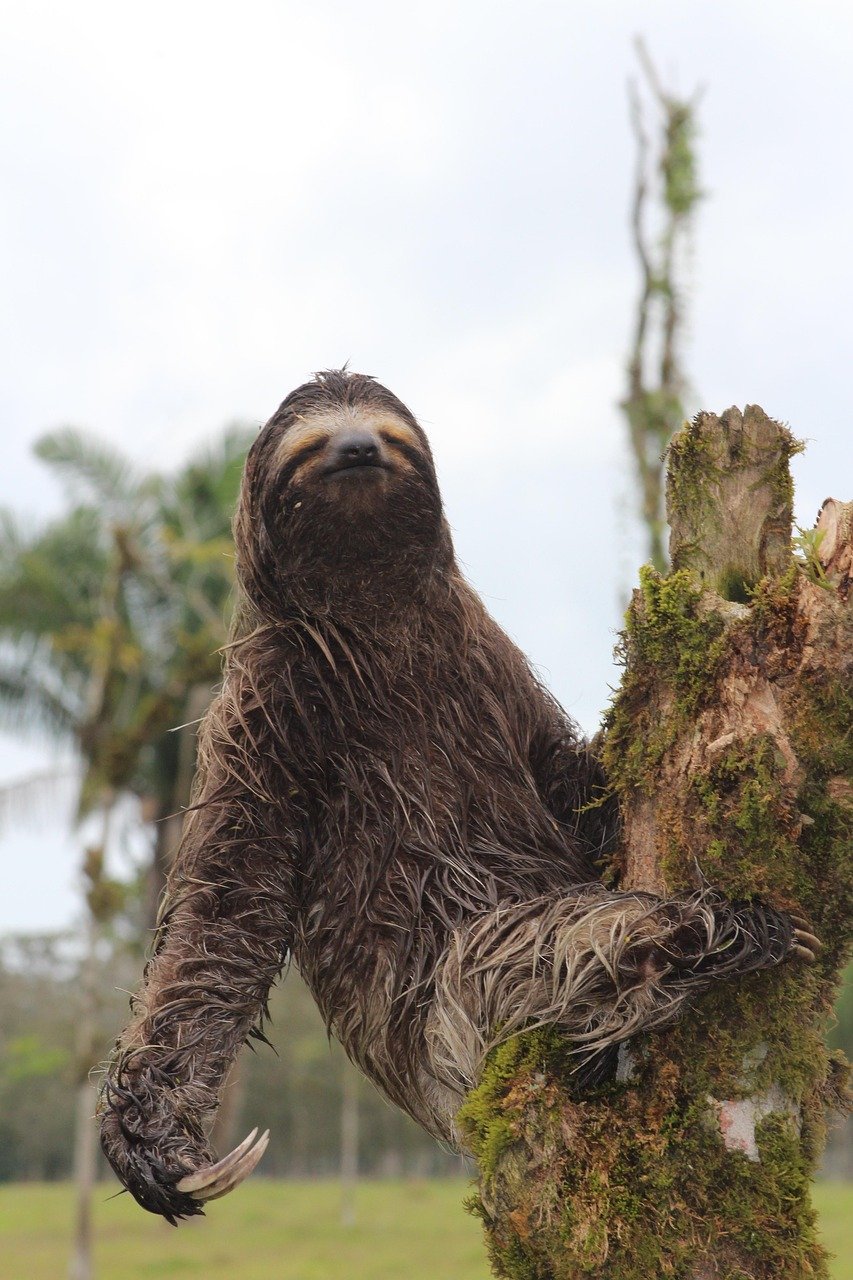
Imagine eating a salad that takes a week to digest. That’s daily life for a sloth. Their digestive system is so slow that they only descend from the trees about once a week to relieve themselves. This sluggish digestion isn’t accidental—it’s an adaptation to their low-energy diet. Every movement is a calculated risk, and sloths have learned to stretch out their energy as much as possible. It’s not that the food makes them loopy; it’s that it demands a lifestyle built around patience.
Metabolism: The Engine Running in First Gear
A sloth’s metabolism is one of the slowest among mammals. While a typical mammal might burn calories quickly, the sloth’s metabolic rate is about half that of other animals its size. This slow metabolism means sloths produce less body heat and conserve energy by moving slowly. Their internal “engine” is always idling, never revving up, which contributes to their seemingly “chilled out” existence.
Thermoregulation: Staying Cool by Moving Less
Sloths don’t regulate their body temperature as efficiently as most mammals. Instead, they rely on the environment to stay warm or cool. Moving slowly helps them avoid overheating, since fast movements would generate more body heat than their bodies can handle. On cooler days, you’ll often see sloths sprawled out to soak up the sun, while on hot days, they’ll curl up in the shade. Their temperature-regulating strategy adds another layer to their slow lifestyle.
Energy Conservation: The Ultimate Survival Tactic
Life in the rainforest is tough, especially when your diet isn’t exactly energizing. Sloths have mastered the art of doing less to survive. Every action, from reaching for a leaf to scratching an itch, is performed with the kind of slowness that would frustrate most animals. But for sloths, conserving energy is a matter of life and death. Their slow movements make them less noticeable to predators and help them survive on a meager diet.
Camouflage and Stealth: Slowness as a Defense Mechanism
Being slow isn’t just about saving energy—it’s a clever way to avoid being eaten. Sloths move so slowly that algae actually grow in their fur, giving them a greenish tint that blends in with the treetops. This camouflage makes it hard for predators like jaguars and eagles to spot them. Their unhurried movements also avoid drawing attention, as quick, sudden motions are more likely to trigger a predator’s hunting instincts.
The Myth of Sloth Intoxication: Separating Fact from Fiction
People have long joked that sloths must be “high” because of their slow, dreamy behavior. Some even speculate that the leaves they eat contain mind-altering substances. But scientific studies have found no evidence of psychoactive compounds in the sloth’s diet. The truth is, their strange behavior is all about biology, not botany. They’re not stoned; they’re just perfectly designed for a life of patience and stealth.
Sloth Muscles: Weak by Design
You’d be surprised to learn how little muscle mass a sloth has compared to other mammals. Their muscles are adapted for hanging rather than running or fighting. This means they can dangle from branches for hours with barely any effort, but they could never outrun a predator. Their muscle fibers are built for endurance, not power, and that’s just fine for their slow-motion way of life.
Slow Motion Perception: How Sloths Experience the World
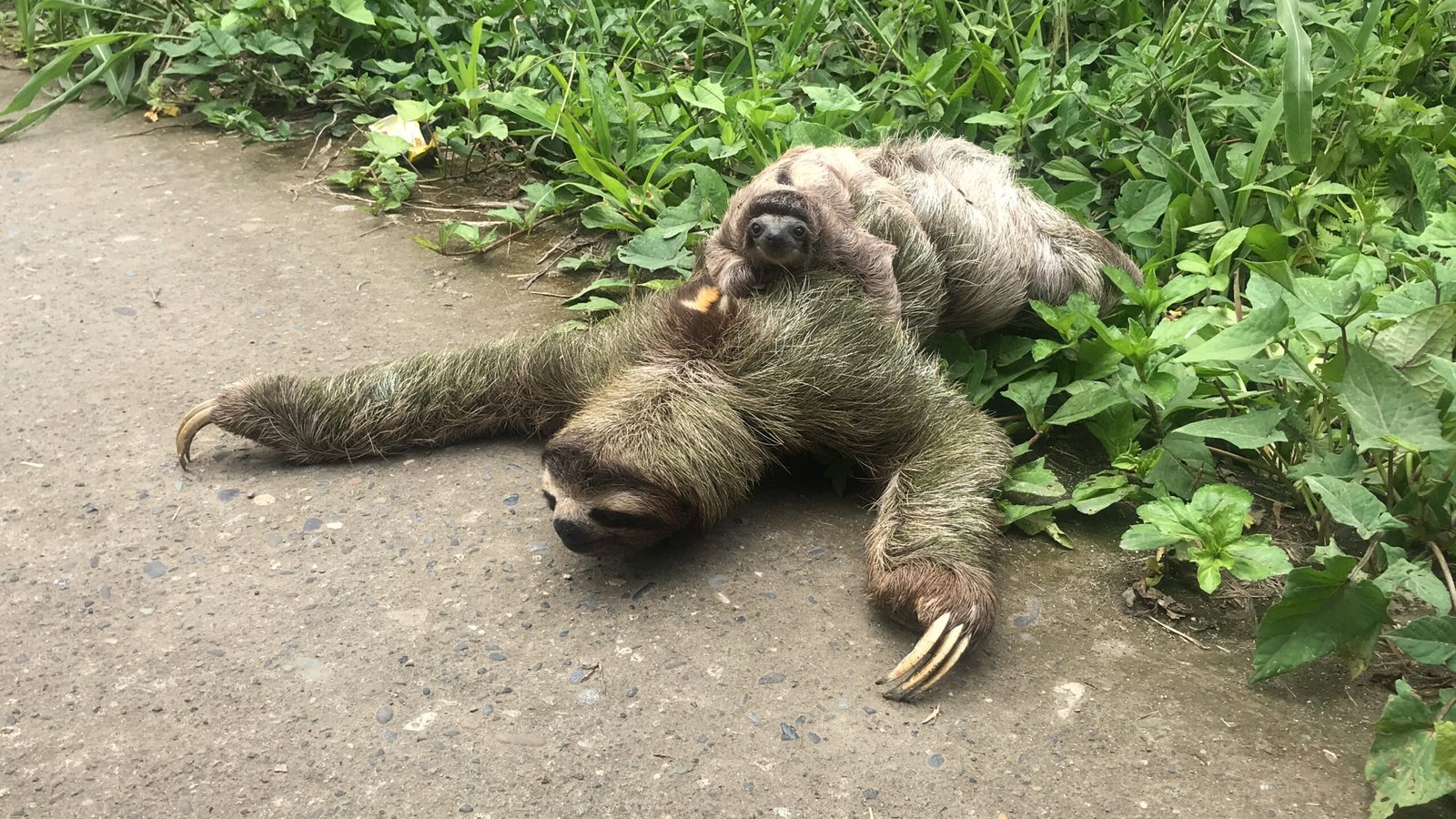
Living in the slow lane affects how sloths perceive their environment. Their senses are tuned differently than ours. They don’t rely on sharp eyesight or quick reflexes. Instead, their world is a gentle, unhurried flow of sights and sounds. Some scientists believe sloths may even experience time differently, in a way that matches their slow pace. Watching a sloth can feel like watching life in slow motion, and in a way, that’s exactly what’s happening.
Brain Power: Not as Dopey as They Look
It’s tempting to assume that sloths are simple-minded because of their slow movements and vacant expressions. But sloths are actually quite clever in their own way. They remember the locations of their favorite trees, navigate complex environments, and even teach their young which leaves are safe to eat. Their intelligence is adapted for a slow, deliberate lifestyle, not for quick problem-solving like monkeys or raccoons.
Predator Avoidance: Outlasting Instead of Outrunning
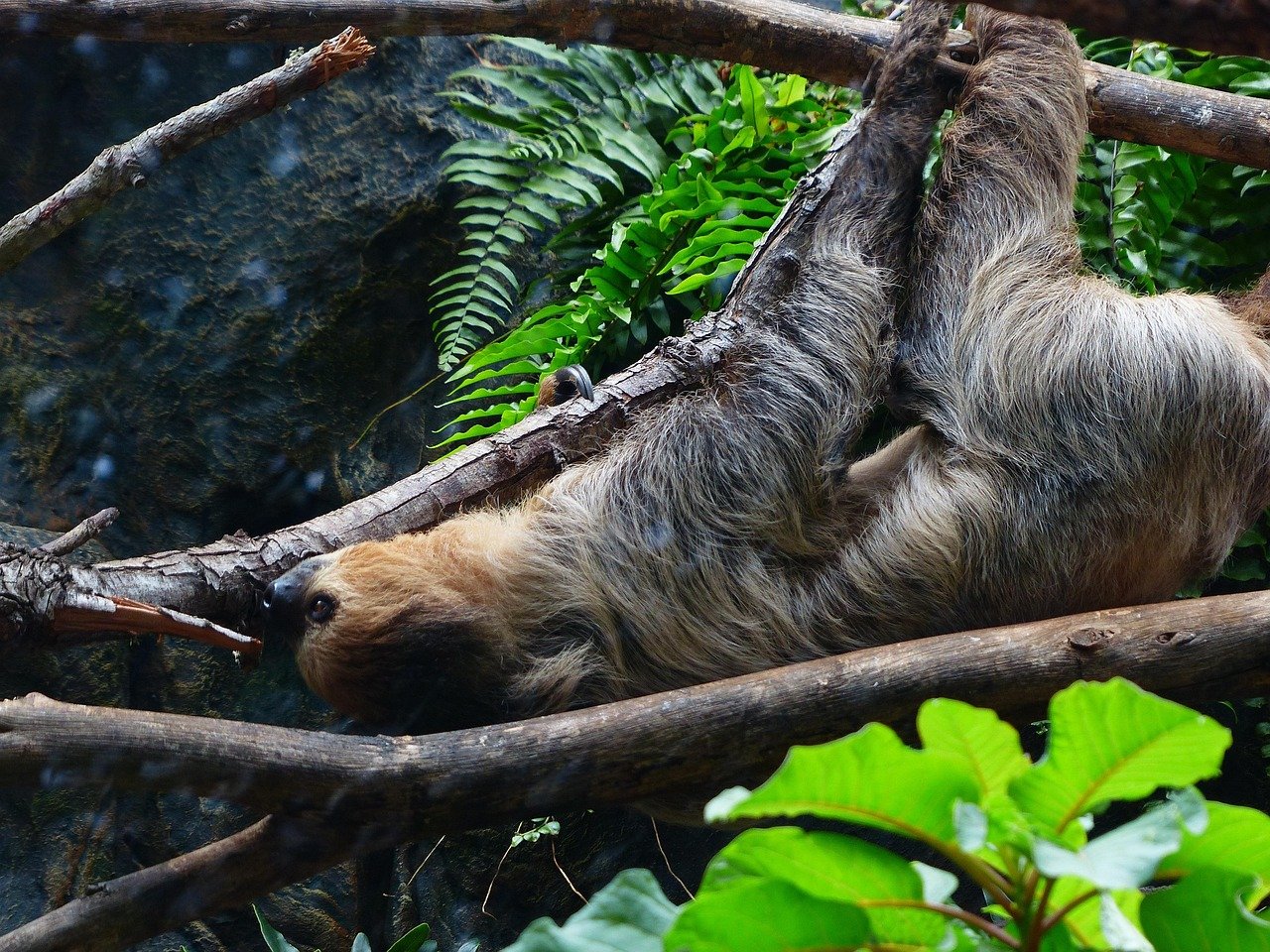
Most animals rely on speed to escape danger, but not sloths. Their best defense is to stay still and blend in. When a predator is near, a sloth will freeze, becoming almost invisible against the leafy canopy. It’s a risky strategy, but it works. By outlasting threats rather than outrunning them, sloths have survived in the jungle for millions of years.
The Role of Algae: An Unexpected Partnership
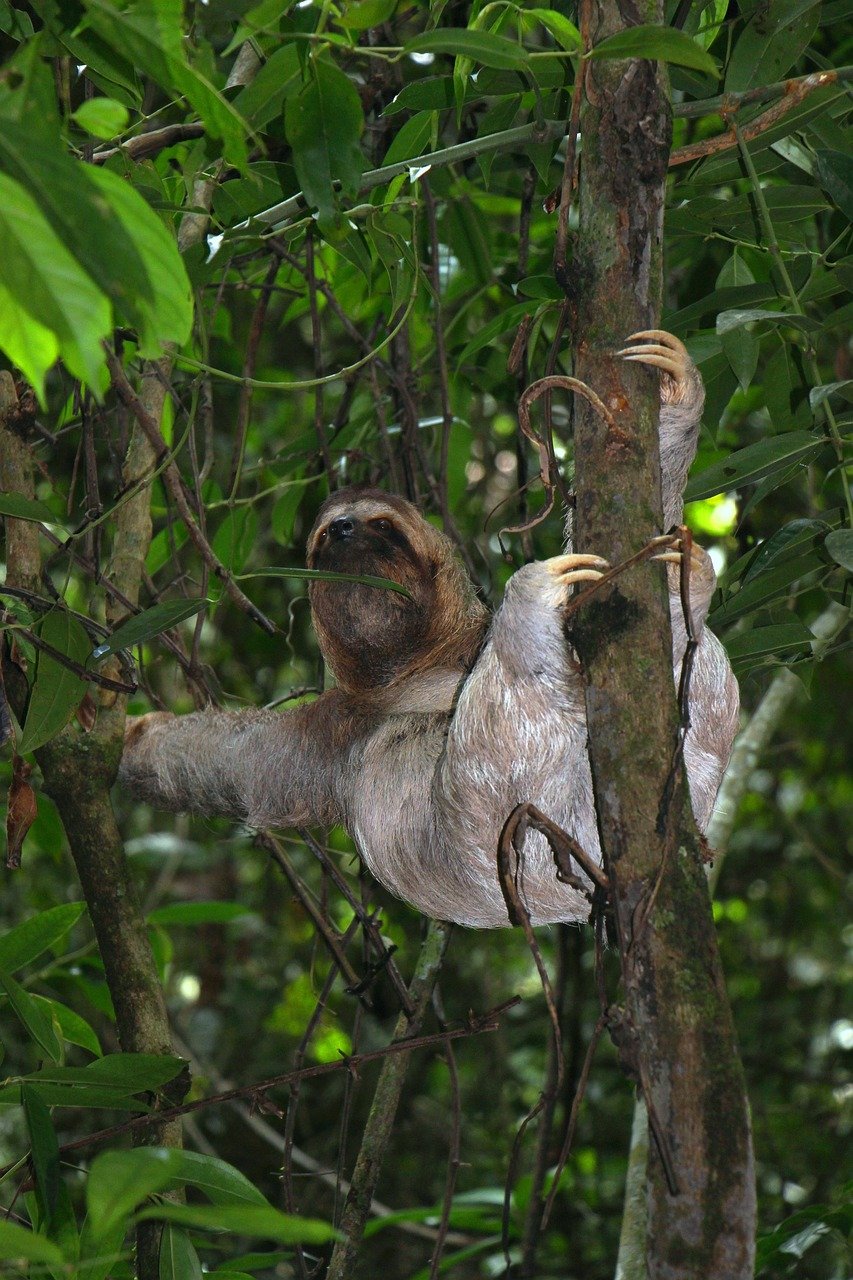
Algae growing on a sloth’s fur isn’t just about camouflage. It turns out, this green fuzz offers extra benefits. The algae provide nutrients that sloths can absorb through their skin, and some scientists think the relationship may help keep their fur clean. This unexpected partnership is just one more way sloths have turned slow living into an art form.
Sloth Sleep Habits: Masters of Rest and Relaxation
Sloths are experts at getting the rest they need. They sleep up to 15 hours a day, curled up in the crook of a tree branch. Their long naps help them conserve energy and recover from the effort of digesting tough leaves. Sleep is a crucial part of their survival strategy, allowing them to stay healthy in an environment where food is hard to process and every calorie counts.
Social Life: Solitude Over Socializing
Unlike monkeys or parrots, sloths are solitary creatures. They spend most of their lives alone, meeting others only during mating season. This solitary lifestyle means they don’t need to compete for food or attention, which suits their slow, energy-saving approach. Their peaceful existence is another reason they seem so content and unbothered by the chaos around them.
Slow Reproduction: Taking Their Time to Raise a Family
Sloths don’t rush when it comes to family life. Females give birth to just one baby at a time, and pregnancy lasts for months. After birth, the mother carries her baby for six months or more, teaching it the skills it needs to survive. This slow reproductive rate means sloth populations grow gradually, but it also makes them vulnerable to threats like habitat loss.
Environmental Threats: When Being Slow Becomes a Risk

While sloths’ slow pace has served them well for millions of years, it’s a disadvantage in today’s rapidly changing world. Deforestation and habitat destruction are major threats, and sloths can’t move quickly enough to escape danger. Their slow reproductive rate makes it hard for populations to recover from losses. Conservationists are working hard to protect these unique animals before their slow-motion way of life disappears forever.
Human Perceptions: The Power of a Myth
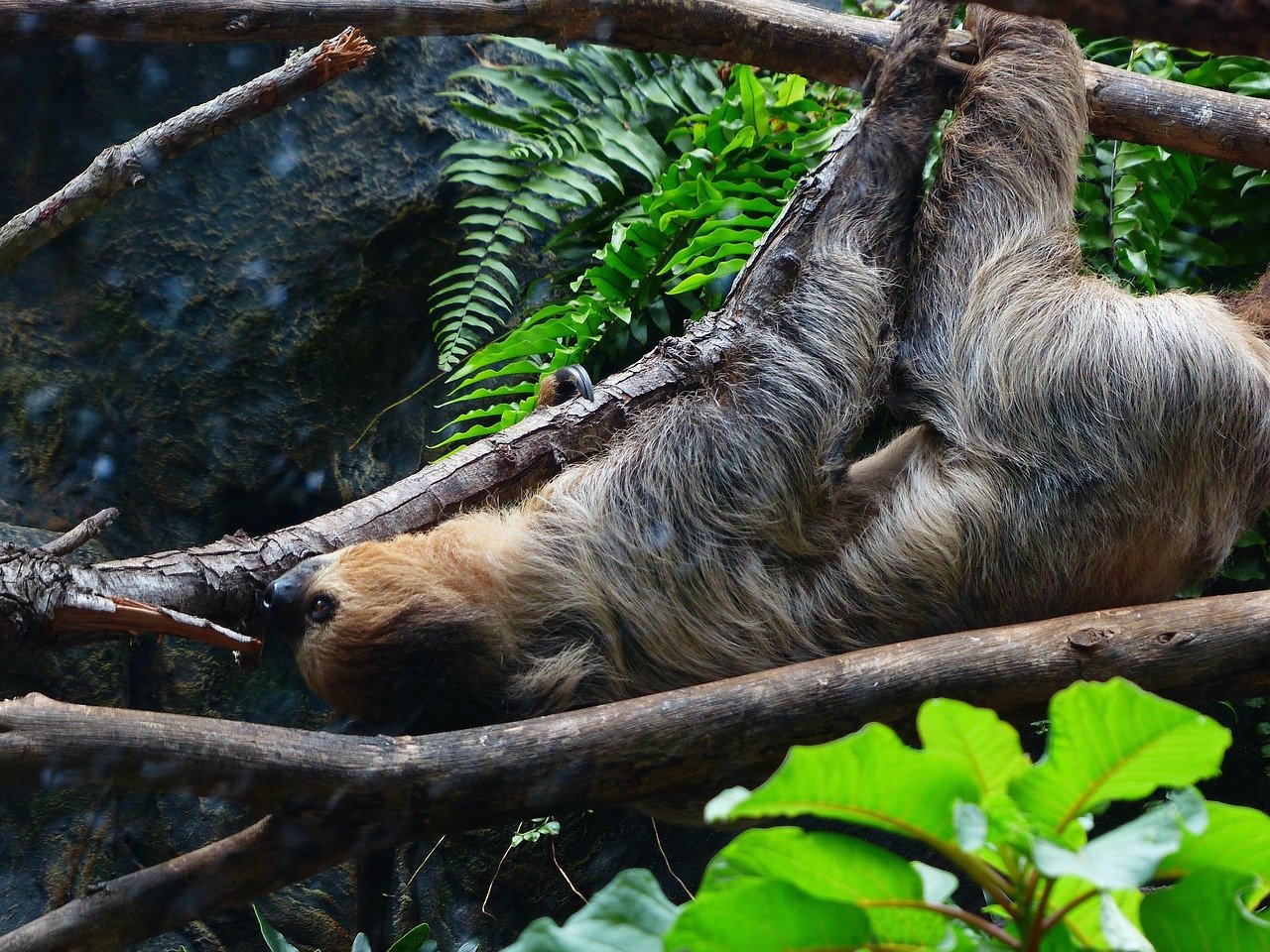
The idea of the “stoned sloth” is a powerful, funny image that’s become a staple of internet memes and pop culture. But it’s important to look beyond the jokes and appreciate the real story behind their behavior. Sloths aren’t lazy or high—they’re survivors, perfectly adapted to a challenging environment. Understanding this helps us respect their unique place in the natural world.
Lessons from Sloths: Embracing the Art of Slow
In a world obsessed with speed and productivity, sloths remind us that slow can be beautiful. Their lives are a testament to patience, conservation, and resilience. Watching a sloth teaches us to appreciate quiet moments, to move with intention, and to savor the journey instead of rushing to the finish line. Maybe we could all use a bit more sloth in our lives.
The next time you see a sloth hanging from a branch, looking blissfully at peace, remember: there’s nothing “stoned” about it. It’s just living proof that sometimes, the slowest creatures have the most to teach us.


